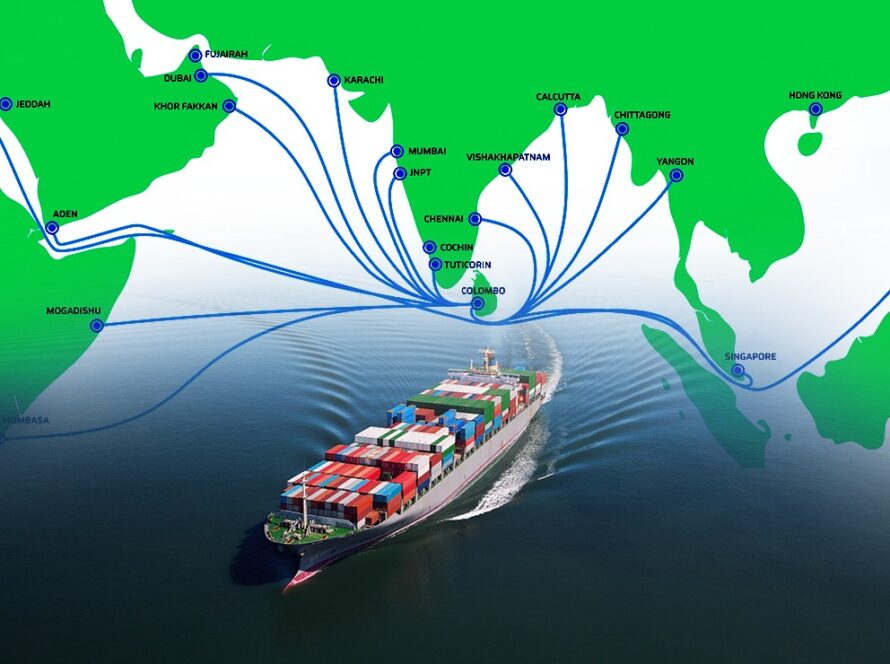“Understanding the Different Types of Vessels in the Maritime Industry: A Guide for Efficient Shipping Solutions”
 There are various types of vessels used in the shipping industry, each designed to handle specific types of cargo or tasks. Below is a detailed breakdown of the main types of vessels
There are various types of vessels used in the shipping industry, each designed to handle specific types of cargo or tasks. Below is a detailed breakdown of the main types of vessels
- Container Ships
- Function: These vessels are designed to carry standardized cargo containers. They are a critical part of intermodal transport, allowing easy transfer between ships, trucks, and trains.
- Cargo: General cargo packed in containers (e.g., electronics, clothing, machinery).
- Example: Ultra Large Container Vessels (ULCV) like the Ever Given (the ship famously stuck in the Suez Canal).
- Bulk Carriers
- Function: Bulk carriers are used to transport unpackaged bulk cargo, usually dry cargo.
- Cargo: Raw materials such as coal, grain, cement, iron ore, and other dry bulk.
- Subtypes:
- Handysize: Smallest bulk carriers.
- Capesize: Largest bulk carriers, too big for the Panama or Suez Canals.
- Tankers
- Function: These ships are used for the transportation of liquids.
- Cargo: Oil, petroleum products, chemicals, liquefied natural gas (LNG), and other liquids.
- Subtypes:
- Crude Oil Tankers: Transport crude oil from oil-producing regions to refineries.
- Product Tankers: Carry refined products like gasoline and diesel.
- Chemical Tankers: Designed to carry specific chemicals.
- LNG/LPG Tankers: Transport liquefied natural gas or liquefied petroleum gas.
- Ro-Ro Ships (Roll-on/Roll-off)
- Function: These ships are designed to carry wheeled cargo such as cars, trucks, and trailers that are driven on and off the ship.
- Cargo: Automobiles, heavy machinery, and other rolling stock.
- Subtypes:
- Pure Car Carriers (PCC): Specifically designed to transport cars.
- RoPax Ferries: Combined roll-on/roll-off ships and passenger ferries.
- General Cargo Ships
- Function: These ships carry break-bulk cargo that cannot be containerized, such as machinery, steel, or timber.
- Cargo: Non-containerized goods, including project cargo that is oversized or unusually shaped.
- Subtypes:
- Multi-purpose vessels: Can carry various types of cargo including bulk and break-bulk.
- Passenger Ships
- Function: These ships transport people rather than goods.
- Types:
- Cruise Ships: Offer luxurious travel experiences across various destinations.
- Ferries: Short-distance transport of passengers, vehicles, and cargo.
- Example: Large ocean liners like the Queen Mary 2.
- Specialized Vessels
- Function: Designed for specific operations beyond standard cargo transport.
- Types:
- Reefer Ships: These vessels have temperature-controlled facilities for transporting perishable goods like food (e.g., fruits, vegetables, meat).
- Heavy-Lift Vessels: Used to transport oversized, heavy cargo like industrial equipment, offshore oil rigs, or large construction materials.
- Cable-Laying Ships: Used for installing submarine cables (e.g., telecommunications, power).
- Dredgers: Ships designed to remove sediment and debris from the bottom of bodies of water, such as in harbors or rivers.
- Offshore Vessels
- Function: Support offshore oil and gas exploration and production operations.
- Types:
- Platform Supply Vessels (PSV): Transport supplies to offshore oil platforms.
- Anchor Handling Tug Supply Vessels (AHTS): Assist in handling anchors for oil rigs and tow them to different locations.
- Drillships: Specialized vessels equipped for deepwater drilling.
- FPSO (Floating Production Storage and Offloading): Ships designed to extract and store oil and gas.
- Tugs
- Function: Small, powerful vessels used to assist in maneuvering larger ships into and out of ports, harbors, and through narrow waterways.
- Types:
- Harbor Tugs: Operate in ports to help dock and undock vessels.
- Ocean-going Tugs: Used for long-distance towing of disabled ships or large structures like oil rigs.
- Fishing Vessels
- Function: Ships dedicated to catching fish and other marine resources.
- Types:
- Trawlers: Use large nets to catch fish.
- Factory Ships: Equipped with processing facilities to clean, freeze, and package fish directly at sea.
- Longliners: Use long fishing lines with baited hooks.
- Dredgers
- Function: Dredging vessels are used to remove sand, silt, and debris from the bottom of water bodies to keep shipping lanes, harbors, and other waterways navigable.
Each type of vessel plays a critical role in global trade and maritime activities, serving specialized needs across various industries.
“Comprehensive Ship Agency and Ship Chandler Services in Sri Lanka: Supporting Global Maritime Operations: Ocean Maritime Ceylon Private Limited / OMC”


